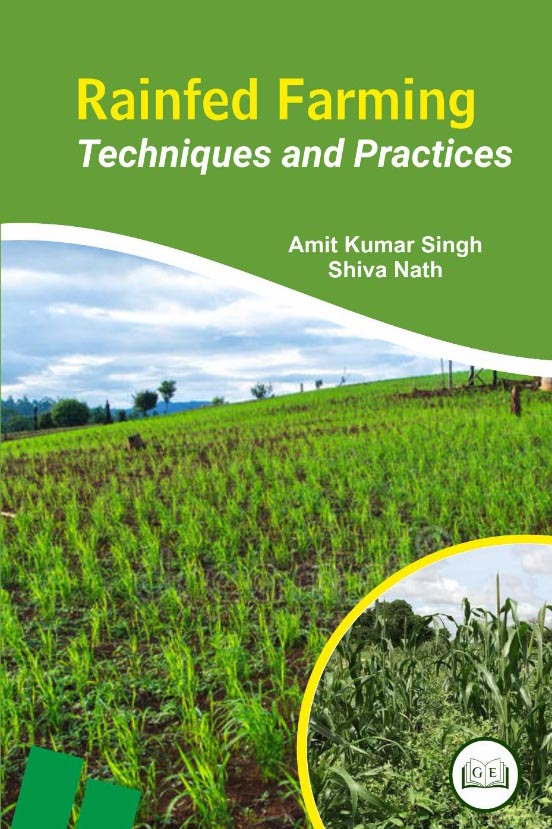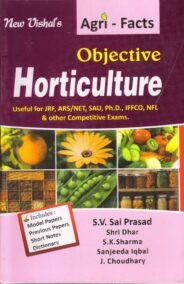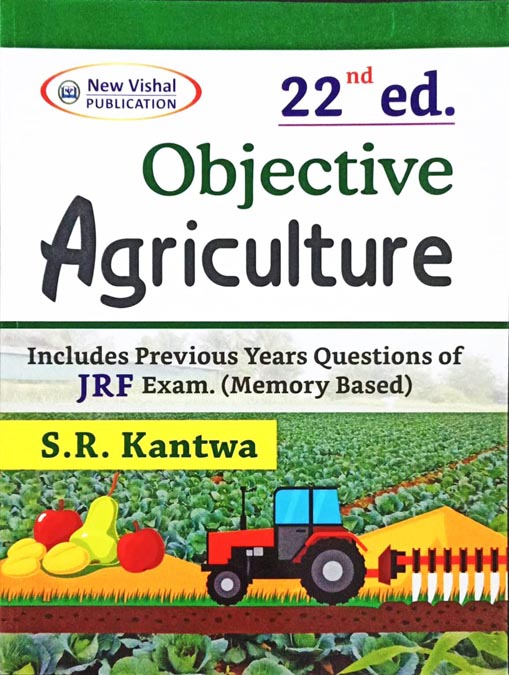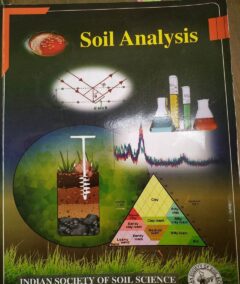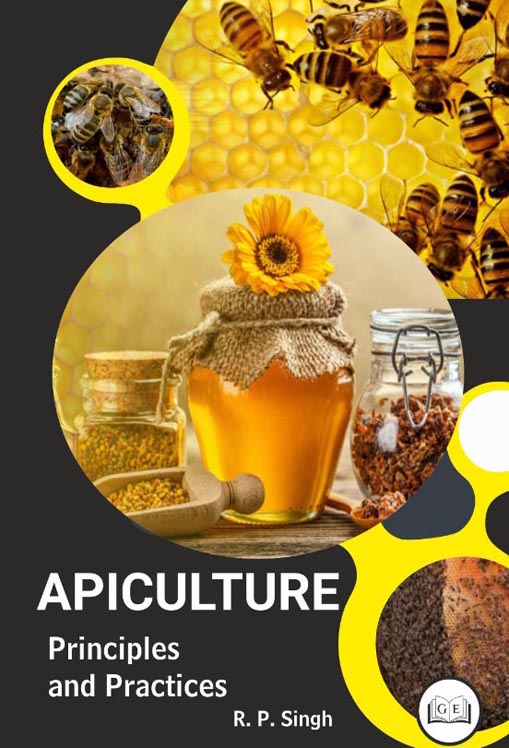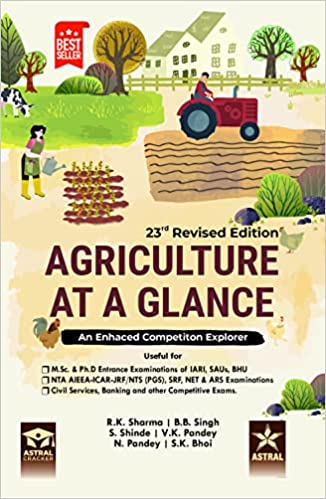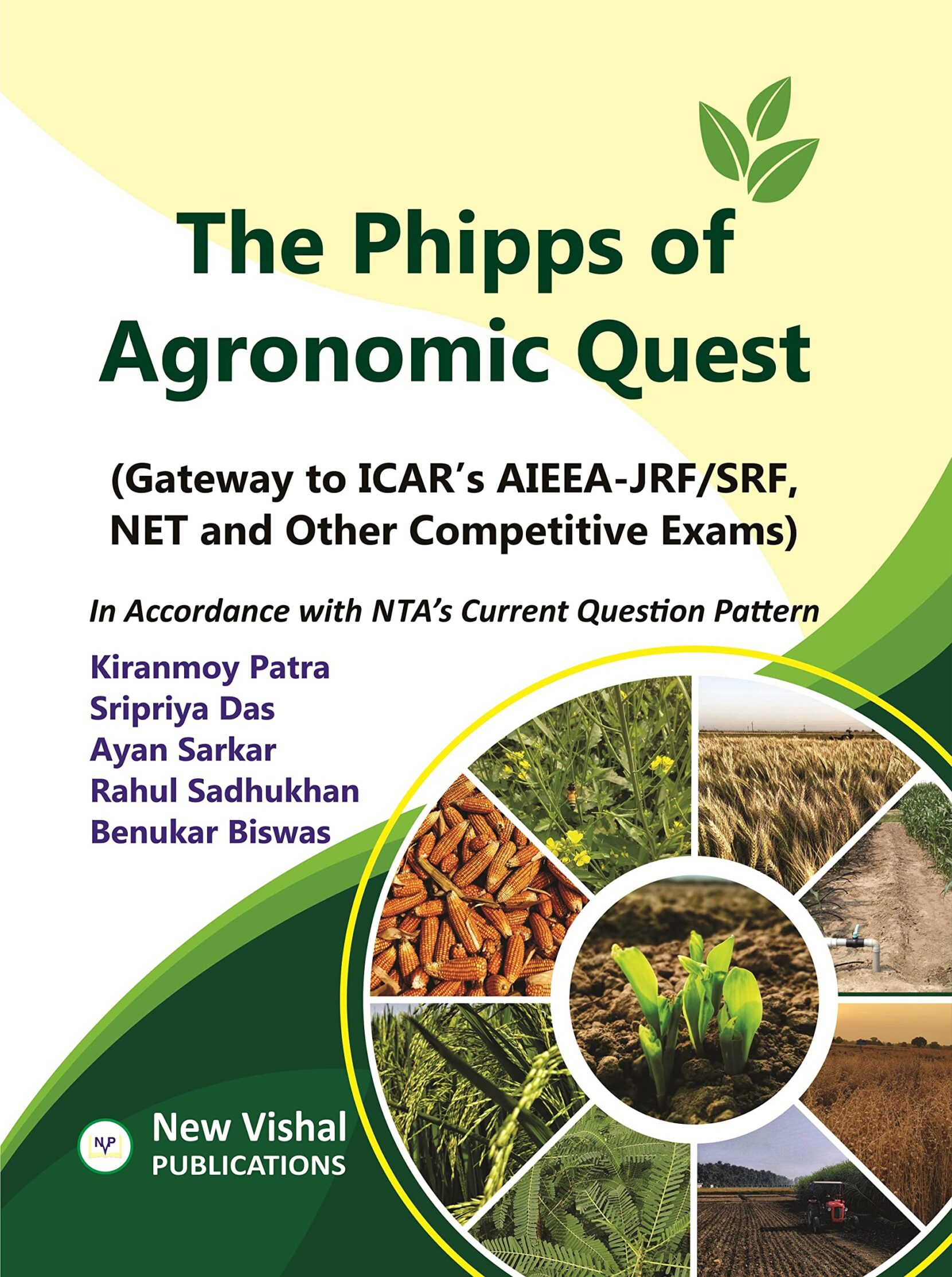“Textbook of Soil Science” has been added to your cart. View cart
Add to Wishlist
-7%
ABC of Organic Farming
Publisher: Jain Brothers
₹150.00 Original price was: ₹150.00.₹140.00Current price is: ₹140.00.
Usually dispatched in 2 to 3 days
Safe and Secure Payment Gateway
Categories:
Agriculture, Books
Tag:
Exclusive
Book information
ISBN 13
978-8183602150
Number of pages
110
Format
Paperback
Language
English
Available
5
Related products
-9%
Objective Agriculture: Includes Previous Papers Questions of JRF, Exams ( Memory Based) – 22nd Edition
By S.R. Kantwa
Year of Publication 2
This book owes its origin to the sincere and hardworking, analysis of questions being asked in examination, being conducted by ASRB, ARS, SRF, JRF / NET and various Agricultural Universities including bank Exams. The competition is an endeavour to present, present day relevant question in use-friendly / systematic in more reliable way, various examination. These set of questions will give the candidates an idea about the model question and will help them to be focused. The main objective of this book is to help the readers to quickly grasp the facts comprehensively and systematically form various branches of agriculture Agronomy, Soil Science, Plant Pathology, Entomology, Generics and plant Breeding, Agriculture Economics, Agricultural Extension, Agricultural Statistics, Plant Physiology, Horticulture, Animal Husbandry, and Veterinary Science, Agricultural Engineering and Fisheries Science. However, I Should consider my labour well rewarded only if this book serves the needs of all concerned. Readers are welcome to Point out errors and omissions, if any, and send their valuable suggestions for improving the quality of book.
-9%
Objective Agriculture: Includes Previous Papers Questions of JRF, Exams ( Memory Based) – 22nd Edition
By S.R. Kantwa
This book owes its origin to the sincere and hardworking, analysis of questions being asked in examination, being conducted by ASRB, ARS, SRF, JRF / NET and various Agricultural Universities including bank Exams. The competition is an endeavour to present, present day relevant question in use-friendly / systematic in more reliable way, various examination. These set of questions will give the candidates an idea about the model question and will help them to be focused. The main objective of this book is to help the readers to quickly grasp the facts comprehensively and systematically form various branches of agriculture Agronomy, Soil Science, Plant Pathology, Entomology, Generics and plant Breeding, Agriculture Economics, Agricultural Extension, Agricultural Statistics, Plant Physiology, Horticulture, Animal Husbandry, and Veterinary Science, Agricultural Engineering and Fisheries Science. However, I Should consider my labour well rewarded only if this book serves the needs of all concerned. Readers are welcome to Point out errors and omissions, if any, and send their valuable suggestions for improving the quality of book.
-17%
Rainfed Farming: Techniques and Practices
This book analyses common rainfed farming systems and defines the principles and practices important to their effective functioning and management. The chapters of the book have been selected and arranged in such a manner as to lead the students through the entire gamut of rainfed agriculture supported by suitable examples and diagrams. The topics covered are most relevant in view of growing interests of rainfed agriculture technologies. The focus is on new concepts and approaches in dryland and rainfed lands, dryland farming techniques, watershed management and its components, agricultural technology for drylands, drought preparedness and management, water harvesting and its role in rainfed agriculture, integrated watershed management, strategies for mitigating and adapting to climate change in rainfed areas, role of mulching in soil and water conservation, agriculture’s effects on society and economy. The book is also supported with a comprehensive glossary and index in the end. This book will be useful to the students, teachers, progressive farmers, policy makers, extension workers and researchers working on various institutes and different universities.
-17%
Rainfed Farming: Techniques and Practices
This book analyses common rainfed farming systems and defines the principles and practices important to their effective functioning and management. The chapters of the book have been selected and arranged in such a manner as to lead the students through the entire gamut of rainfed agriculture supported by suitable examples and diagrams. The topics covered are most relevant in view of growing interests of rainfed agriculture technologies. The focus is on new concepts and approaches in dryland and rainfed lands, dryland farming techniques, watershed management and its components, agricultural technology for drylands, drought preparedness and management, water harvesting and its role in rainfed agriculture, integrated watershed management, strategies for mitigating and adapting to climate change in rainfed areas, role of mulching in soil and water conservation, agriculture’s effects on society and economy. The book is also supported with a comprehensive glossary and index in the end. This book will be useful to the students, teachers, progressive farmers, policy makers, extension workers and researchers working on various institutes and different universities.
-16%
Rejuvenation of Apple Orchards and High Density Planting in Kashmir
Year of Publication 2
Biotech KISAN Hub project being implemented by Division of fruit Science SKUAST-K with financial and technical support from the Department of Biotechnology, Ministry of Science & Technology, Govt. of has been instrumental in increasing in HDAP units in Kashmir from mere 90 to more than 500 covering an area of around 200 ha and rejuvenation units from almost nil to a more than 100 in a short span of 2 years. The apprehensions which were among the farming community have been addressed through regular training and demonstrations carried out by the Biotech KISAN hub for both rejuvenation and HDAP. The farmers in the south Kashmir districts have adopted the HDAP and rejuvenation technology at a faster pace and are currently leading and setting up the trend for all other districts of the valley. The average yield ofHDAP apple and the varieties introduced by Biotech KISAN hub will be around 40-60 t/ha compared to just 11 t/ha from traditional apple trees. The technology has simultaneously been transferred to state departments as well as KVKs. The impact of project activities has been significant in changing the attitude of the state govt. also and is planning to take it as a scheme vigorously. The awareness about both rejuvenation and HDAP was meager in northern districts of the valley and the Biotech KISAN hub team has introduced the first HDAP Units in said districts along with rejuvenation units. It is now expected that the farmers shall adopt HDAP and rejuvenation technology in the future with ease. The state government has decided to take it in mission mode. The HDAP and rejuvenation of apple orchards with new mutant is the future of apple orcharding system in valley and must be adopted in other apple growing regions of India as well.
-16%
Rejuvenation of Apple Orchards and High Density Planting in Kashmir
Biotech KISAN Hub project being implemented by Division of fruit Science SKUAST-K with financial and technical support from the Department of Biotechnology, Ministry of Science & Technology, Govt. of has been instrumental in increasing in HDAP units in Kashmir from mere 90 to more than 500 covering an area of around 200 ha and rejuvenation units from almost nil to a more than 100 in a short span of 2 years. The apprehensions which were among the farming community have been addressed through regular training and demonstrations carried out by the Biotech KISAN hub for both rejuvenation and HDAP. The farmers in the south Kashmir districts have adopted the HDAP and rejuvenation technology at a faster pace and are currently leading and setting up the trend for all other districts of the valley. The average yield ofHDAP apple and the varieties introduced by Biotech KISAN hub will be around 40-60 t/ha compared to just 11 t/ha from traditional apple trees. The technology has simultaneously been transferred to state departments as well as KVKs. The impact of project activities has been significant in changing the attitude of the state govt. also and is planning to take it as a scheme vigorously. The awareness about both rejuvenation and HDAP was meager in northern districts of the valley and the Biotech KISAN hub team has introduced the first HDAP Units in said districts along with rejuvenation units. It is now expected that the farmers shall adopt HDAP and rejuvenation technology in the future with ease. The state government has decided to take it in mission mode. The HDAP and rejuvenation of apple orchards with new mutant is the future of apple orcharding system in valley and must be adopted in other apple growing regions of India as well.



